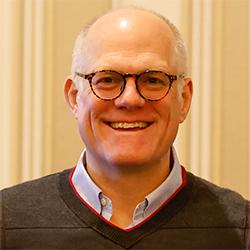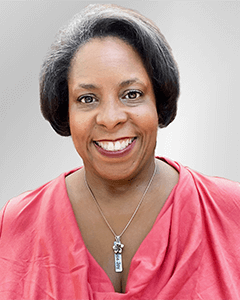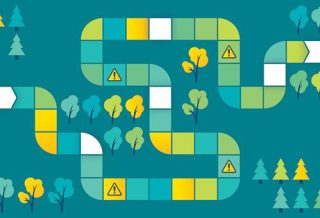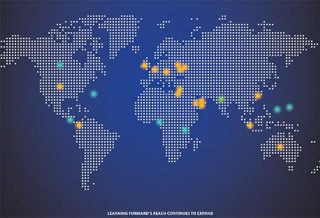NETWORKS AT WORK
Practical measures tell us if change is making a difference
By Nick Morgan and Michelle Bowman
Categories: Change management, Data, Evaluation & impact, Standards for Professional LearningApril 2024
Change is hard. Whether baking bread or implementing a new high-quality curriculum, our first attempts at trying something new often don’t turn out the way we envisioned. This is why continuous improvement initiatives have become popular — they help us learn to get better at getting better.
Learning Forward’s work on continuous improvement has encompassed many subject areas and grade levels over the past decade. Our network initiatives use structured processes built on systems of measurement that track the evolution of change toward a desired end state. The selection and careful use of practical measures as part of a larger system of measures is critical for making improvement processes effective. The right measures help us learn whether changes are actually improvements and provide timely feedback on the trajectory of longer-term success or failure.
Change is hard. Whether baking bread or implementing a new high-quality curriculum, our first attempts often don’t turn out the way we envisioned. But continuous improvement can help us learn to get better at getting better.… Share on XWhat is a practical measure, and what makes it practical?
The Evidence standard of the Standards for Professional Learning reminds us that we need a combination of relevant data and evidence to understand learning, improvement, and potential impacts of our work (Learning Forward, 2022). When we think of measurement and metrics, our minds often go to tools used for accountability and research. However, these tools have drawbacks, including high costs, time lags in returning data, and challenges generalizing findings to other settings.
Measuring for improvement with practical measures has a different focus: to help us better understand learning and whether change is an improvement. Practical measures help us learn from inquiry cycles, which in turn determine teams’ next steps and future inquiry cycles. Measures are practical in that they are intended to be used with, by, and for the practitioners who are seeking improvement and to learn whether the changes that are introduced are, in fact, leading to improvement. By design, the measures are minimally burdensome so practitioners can collect data in a regular and timely manner by embedding them into existing workflows. Collective analysis and sensemaking occur in low-stakes environments (Brannegan & Takahashi, 2023; Carnegie Foundation for Improvement, 2024). Well-designed continuous improvement efforts and the practical measures they use include the voices of those delivering the services (teachers) and those participating in the services (students).
Examples of using practical measures can include:
- A simple formative assessment to examine whether a behavioral change or intended learning outcome has occurred at either the teacher or student level, such as the amount of time a teacher spends on a certain activity or the aggregate student results of a lesson cool-down.
- A measure that examines a process outcome that is believed to contribute to a desired learning outcome, such as the frequency of a certain kind of activity. An example might be a tally by student of the number of times a mathematics language routine is used during a set time period.
- Granular, quick, daily indications of progress using student exit tickets. Exit tickets can be flexible, including learning measures such as a written check for understanding, and gathering student opinions on a limited number of Likert-type scale items.
These measures are nonevaluative and pursued with school leaders’ explicit understanding that learning cycles entail an acceptable amount of risk implicit in trying new things. The change being tested may not work as intended, but learning from failure is valuable, and practical measures are important tools in that process.
Learning Forward’s Curriculum-Based Professional Learning Network showcases practical measures in the field. The network is a collaboration among seven schools in three districts — Metro Nashville Public Schools in Tennessee, Montgomery County Public Schools in Maryland, and the School District of Philadelphia in Pennsylvania — supported by Learning Forward with funding from the Carnegie Corporation of New York. The overall aim of the network is to improve the use of high-quality mathematics curricula in middle schools, with a clear focus on equity. The practical measures in use capture aspects of teaching and learning in 6th- to 8th-grade math and algebra.
For example, two schools in Metro Nashville are testing the use of student annotation strategies in lesson warm-ups to grow mathematical language routines. This focus is based on the observation that students may be strong in computation but not in their ability to read, write, and reason with the principal symbol systems of mathematics. The practical measures track the frequency and quality of student annotation and will look for correlation to student formative assessment results.
The practical measure for frequency is a simple tally gathered by the classroom teacher based on visual observation of student work during the lesson warm-up. The quality dimension requires a simple rubric to move the conversation beyond “Is it happening?” to “How well is it happening?” Teachers or coaches can assess this data by aggregating the tally and looking at trends over time in a run chart. Is the trend going up? Which students are not participating, and why? Teachers can then determine adaptations on a lesson-by-lesson basis and seek signs of correlation with unit tests or formative assessments.
In schools in Montgomery County and Philadelphia, teachers are tracking the time spent on warm-up activities versus cool-down activities, as they address this question: How do you adjust pacing and content to maximize learning outcomes for a given lesson, especially if there is too much content for a short block? In these schools, educators are protecting cool-down time, when teachers give a formative assessment at the end of a lesson to determine if students understood the main concepts of that lesson. Practical measures include hand-held timers used by the teachers to check time used on a given activity. Based on the results, teachers are adjusting their instruction to ensure that the highest-value portions of a lesson are not missed. As teachers make changes and adjust their instruction, teams modify and change the measures to address the next challenges that unfold.
🎯 What makes a measure practical? It's all about simplicity, relevance, and effectiveness. Practical measures revolutionize how educators assess progress, make #DataDriven decisions, and drive improvement in schools. #Innovation Share on XWhat does use of practical measures look like?
Practical measures should reflect practice and be easy to gather and interpret. Teachers participating in the Curriculum-Based Professional Learning Network have found that collecting data with these measures is easier and less of a time burden than they expected; in fact, they find it can result in less work due to the overall gains from the improvement. Gains can be realized in many ways; in our networks, they include positive shifts in student engagement and performance on cool-downs, increased teacher use of lesson components, more efficient team meetings, reduction of reteaching, and greater opportunity for student differentiation.
Teams should analyze the data from practical measures collaboratively and make decisions together about how to move forward. Shared learning and decision-making, which reflect the Culture of Collaborative Inquiry and Implementation standards of the Standards for Professional Learning, are critical parts of the improvement process and typically take place in a professional learning community or similar teacher-based team structure, sometimes with the support and facilitation of an instructional coach.
External facilitators can also provide support. In the Curriculum-Based Professional Learning Network and others, Learning Forward supports the school and district teams with selecting and gathering practical measures and helps facilitate meetings where team members make decisions about scaling, adaptation, or abandonment. We also help network members learn from each other and spread the learning to educators facing similar challenges in other districts.
Learning to improve is more successful when it is a collaborative effort. The professional relationships and insights that are sparked can far outlast individual inquiry cycles and the life of a formal network.
Resources on practical measures
A repository of practical measures for 6th- to 9th-grade mathematics is available at mpm.wested.org. It was built through WestEd’s Math Practical Measurement project as part of the Networks for School Improvement initiative, funded by the Bill & Melinda Gates Foundation.
Download the PDF here.
References
Brannegan, A. & Takahashi, S. (2023, April). Practical measures make data timely and useful. The Learning Professional, 44(2), 52-55.
Carnegie Foundation for the Advancement of Teaching. (2024). Practical measures for improvement: A pathway to get started. www.carnegiefoundation.org/pmi-home/
Learning Forward. (2022). Standards for Professional Learning. Author.
Categories: Change management, Data, Evaluation & impact, Standards for Professional Learning
Recent Issues
WHERE TECHNOLOGY CAN TAKE US
April 2024
Technology is both a topic and a tool for professional learning. This...
EVALUATING PROFESSIONAL LEARNING
February 2024
How do you know your professional learning is working? This issue digs...
TAKING THE NEXT STEP
December 2023
Professional learning can open up new roles and challenges and help...
REACHING ALL LEARNERS
October 2023
Both special education and general education teachers need support to help...












